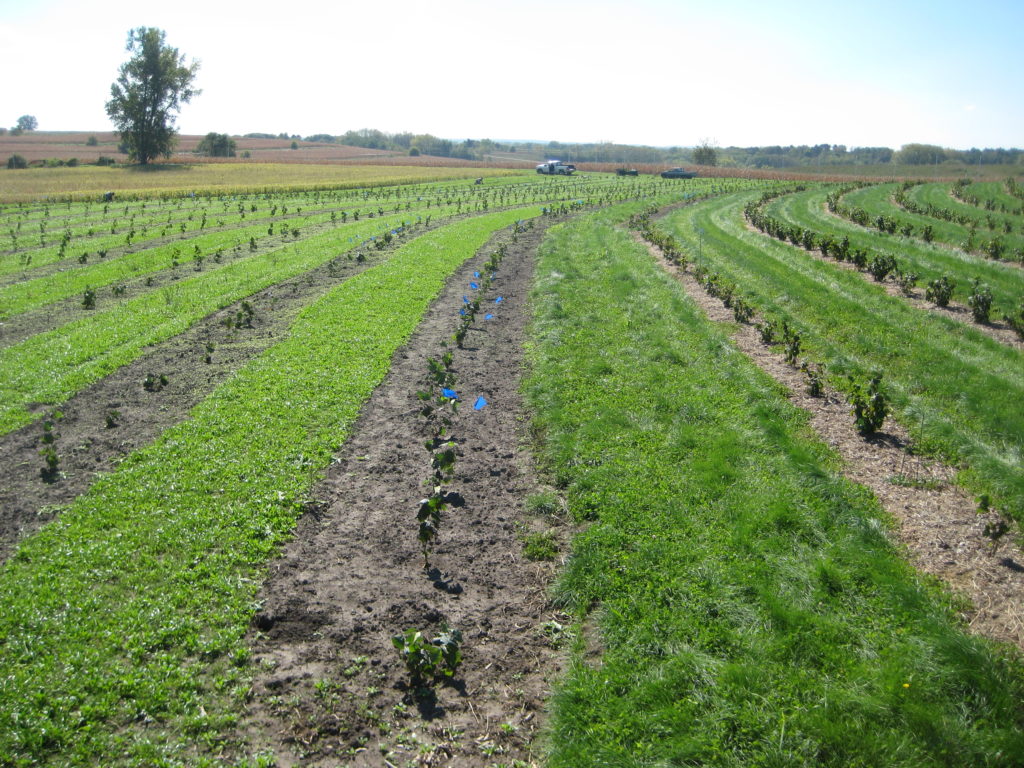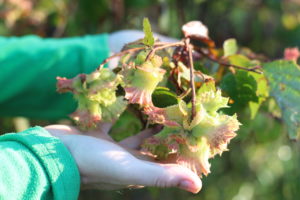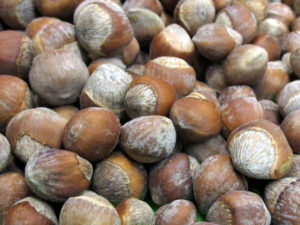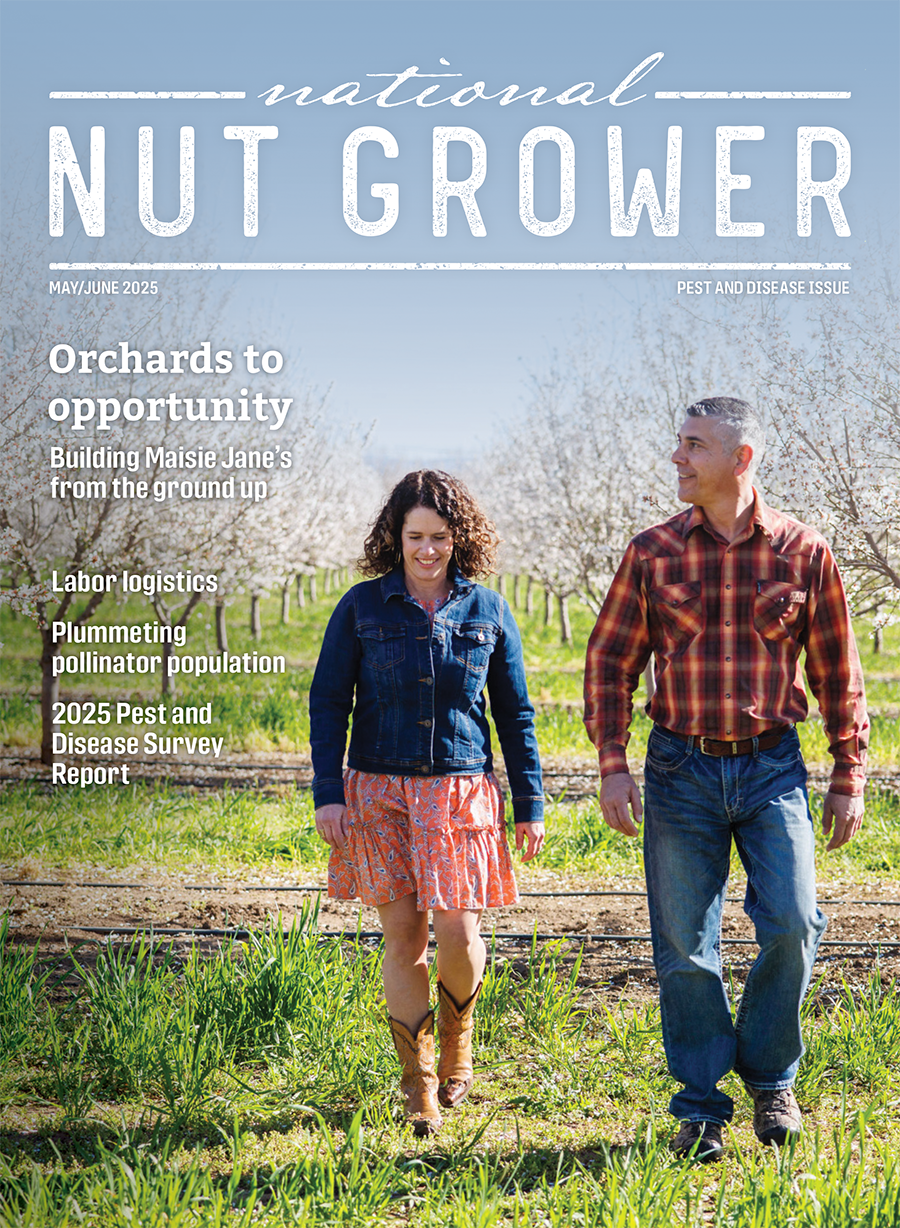
Summer 2021
Hazelnuts: An emerging new crop for the Upper Midwest
The next incarnation of the hazelnut industry is taking shape in what many U.S. tree nut growers might think is the unlikeliest of places: the Upper Midwest. While many crops experience boom and bust cycles, or never fully enter the marketplace properly, the teams and growers behind the hazelnut growth push are taking more calculated steps in launching and growing the industry with intention.
With nonprofit organizations seeing a need and opportunity for hazelnuts, informal development of a regional cluster program began to take shape in the years leading up to January 2020, when a grant formalized the endeavor and officially kicked off the program. With this funding from the USDA and guidance from the Extension programs of the Universities of Wisconsin and Minnesota, six hazelnut grower clusters have formed in the Upper Midwest, each of them coordinated by an industry partner.
“They’re all in,” said Jason Fischbach, agriculture agent for University of Wisconsin Extension and co-leader of the Upper Midwest Hazelnut Development Initiative (UMHDI), of grower reception to the new clusters. “It’s something growers have needed and wanted for a long time – to have a local presence of somebody who can help answer questions and help move things along.”
These clusters act as a resource hub for growers, providing informational material and continuous opportunities for growers to meet, learn and stay up to date. There is also potential for field days to make an appearance for the last half of 2021. There’s also a goal of locally-relevant field trials, whether germplasm or ergonomic, in which each cluster can participate.
The most fundamental part of this design, however, is building the capacity to grow and harvest hazelnuts. These clusters strengthen not only the research possibilities of hazelnuts, but the purchasing power behind each cluster, which comes in handy when negotiating with private nurseries. Growers will also be able to access through their respective clusters the plant material that is made available from UMHDI, a collaboration between the Universities of Minnesota and Wisconsin, which is approaching the project with the strategy of getting limited plant material into the hands of serious growers, and keeping those plantings closer in proximity to one another so growers can pool resources.

Currently, these pooled resources are key in jumpstarting this region’s new crop. Germplasm will improve with coordination and grower participation, and will reduce the randomness of planted seedling locations. Harvesting by hand isn’t economically feasible, and small farms of just a few acres can’t justify the cost of mechanical harvesting. Sharing equipment among growers within a reasonable distance from one another can alleviate the labor-harvest bottleneck that seems to plague growers, and can improve drying and dehusking efforts.
The same rules apply when it comes to accessing markets and having a consistent and dependable hazelnut supply around which companies can build products: production volumes need to be pooled together.
The cost of production isn’t lost on those who are getting in on the ground level. Small scale production is expensive, and those jumping in need to be aware of the potential risks and rewards. And while Midwest hazelnuts never received much public attention nor support before, the potential positives could be enough to garner some subsidies for the industry during these early stages, such as with the Hazelnut Processing Accelerator or the Environmental Quality Incentive Program available through USDA Natural Resources Conservation Service.
Interest and intention
In 2018, at the time of the last grower survey, there was a reported estimated 150 growers identified and scattered across all six clusters. Fischbach estimates that those numbers have remained consistent, and that the number of aspiring growers has significantly increased. But even with the increase in interest, there has been a purposeful lull in planting in the last couple of years. Some private nurseries were selling plant material of seasoned hazelnuts and over-promoting the value of production capability.
“We had a lot of growers planting sort of willy-nilly, not really thinking about it, and they were a little disappointed when they saw the germplasm wasn’t as good as they thought,” explained Fischbach. “We encouraged people to slow down and think about it a bit more, and now we’ve got everyone a little more organized.”
The grower clusters have organized group buys of seedling material, since clonal material is not yet available. Rather than purchasing with the intention of growing a commercial orchard, growers will spend the next two years planting the seedlings as border rows, pollinator rows and for breeding purposes. There’s a more focused approach this time around, which was the inspiration and purpose behind the clusters.
The cluster coordinators are starting to get a better idea of the number of growers, their needs, who they are, and what their goals are in terms of operational size. Part of the grant is to determine this information, and though COVID-19 dampened the plans for this survey work, the cluster coordinators are getting it back on track.
“We’re hoping for the rest of 2021 that we start to see a grower leadership team developed within each cluster, so growers can take over some of the responsibilities and ownership over their clusters,” Fischbach said.
2030 Initiative
Matching Wisconsin’s cranberry acreage, UMHDI is aiming for a goal of 20,000 hazelnut acres in the ground by 2030. While this doesn’t satisfy the demands of large-scale food processing companies, this acreage goal matches up to market development with the anticipation that much of the yield will be processed and sold direct by smaller operators and processors. This would allow for some capture of the retail margin, which is important when starting at a smaller scale.
“In terms of market development work, it’s just such an interesting place because we’re too small to talk to big buyers, and we’re too big for things like farmers’ markets. It’s just not enough volume,” Fischbach said.
The American Hazelnut Co., formed in 2014 and operated by 24 grower-owners, helps fill in the market void. It produces branded food products that are sold to smaller grocery stores and other wholesale markets, as well as direct sales through the company website, festivals, events and other opportunities.

There is also talk about the hazelnut’s viability as a perennial oil seed crop, akin to soybeans or canola, but that is also carbon fixing.
The modeling is still being developed, but the incoming extensive root systems will sequester carbon, especially with an additional row crop between the hazelnut hedges. State and local governments in Minnesota and Wisconsin are starting to provide incentive payments in source water protection areas, and hazelnuts are a valid contender for a spot among the suite of crops to which they’ll provide funding.
“What they’re envisioning is this perennial-based system with rows of hedgerow hazelnuts, and in between the rows a perennial grain crop,” Fischbach said. “They’ve started with Kernza, and hazelnuts are right behind it.”
Kernza is a perennial wheat developed at The Land Institute.
There is documentation that with these root and crop systems in place, there is zero nitrogen leaching from the soil.
With abundant water, except for the sandiest regions, there is almost no need for irrigation, and the plants can actually help saturated areas by drying out the soil through transpiration, with the added advantage of filtering the groundwater.
With the environmental perks and the production resources available to the region, the program is building a strong foundation for a promising industry in the Upper Midwest.
“Growers are running out of excuses for why they shouldn’t grow hazelnuts,” Fischbach laughed.
Photos: University of Wisconsin
The Upper Midwest has six grower cluster networks to support the region’s hazelnut growers. Growers on cluster boundaries are welcome to join either or both networks.
Northwest Wisconsin Grower Cluster
Coordinator: Jason Fischbach, University of Wisconsin Extension jason.fischbach@wisc.edu
Driftless Grower Cluster
Coordinator: David Bruce, Savanna Institute
david@savannainstitute.org
Covering southwest Wisconsin, southeast Minnesota, northeast Iowa, northwest Illinois
Central Wisconsin Grower Cluster
Coordinators: Mrill Ingram, Michelle Miller, Regina Hirsh
University of Wisconsin-Madison Center for Integrated Agriculture Systems
rmhirsch@wisc.edu
Northern Minnesota Grower Cluster
Coordinator: Greg Schwester, University of Minnesota Extension schwe233@umn.edu
Southern Minnesota Grower Cluster
Coordinator: Linda Meschke, Rural Advantage
linda.ruraladvantage@gmail.com
Iowa Grower Cluster
Coordinator: Jeff Jensen, Iowa Nut Growers Association
jjensen@treesforever.org









